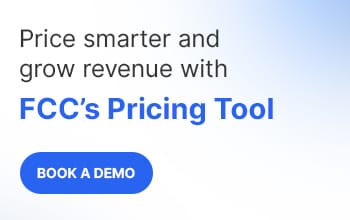Table of Contents
- What is a Price Taker?
- Examples of price takers?
- What is a price maker?
- Price taker vs price maker
- What are the pros and cons of being a price taker?
- What is a price-taker behavior?
- Why a perfectly competitive market is unrealistic
- Conclusion
What is a Price Taker?
Price takers are companies that have little to no control over the prices of the goods or services they sell. Price takers must follow the market trends as they lack the influence or market share to dictate prices.
Price takers, also known as price followers are generally required to maintain their prices and production costs at relatively low levels to retain their customer base. This scenario is common in markets with numerous brands offering similar products, where product homogeneity drives retailers to differentiate themselves through pricing and enhancing product features.
In a perfectly competitive market, companies become price takers due to factors like:
- Identical products: All firms offer the exact same product, making price the primary factor in consumer choice.
- Numerous participants: With a vast number of sellers and buyers, no single entity can influence the market price.
- Transparent information: Consumers have easy access to price information from various sellers, ensuring competitive pricing.
- Free entry and exit: Barriers to entering or leaving the market are minimal, allowing new firms to compete and existing ones to exit if necessary.
Examples of price taker
To understand the concept of price takers in real-world situations, a farmer’s market can be an excellent example. Vendors operating in a farmers' market are price takers because:
- The goods are homogenous: Many vendors sell similar products, such as fruits, vegetables, and handmade goods. For example, a basket of tomatoes sold by one vendor is virtually identical to a basket sold by another, making it difficult for vendors to differentiate their products based on quality or brand.
- There are a large number of buyers and sellers: Farmers' markets typically have many small-scale vendors selling similar items to a large number of customers. No single vendor can influence the overall market price. If one vendor tries to raise prices significantly above the market rate, customers will easily switch to another vendor offering the same product at a lower price.
- Buyers can access perfect information: Customers can quickly compare prices by walking around the market and seeing what each vendor is charging. This transparency ensures that vendors must keep their prices competitive to attract buyers.
- Ease of entry and exit: Compared to larger retail operations, joining or leaving a farmers' market generally involves minimal setup costs and regulatory requirements. This low barrier to entry means that new vendors can easily start selling, and existing ones can exit without significant financial loss.
What is a Price Maker?
A price maker is an entity, typically a firm, that possesses the power to influence the prices of the goods or services it sells. Unlike price takers, price makers operate in imperfectly competitive markets with little to no competition, often due to unique products or monopoly power. They can set prices above marginal cost to maximize profits, as their products lack perfect substitutes.
This pricing power allows them to maintain higher profit margins and control market dynamics. However, this can lead to regulatory scrutiny and potential antitrust issues due to the lack of competitive pricing.
Price Taker vs Price Maker
Price takers are firms that do not have any control over the prices of goods or services they sell and must accept the prevailing market price. They operate in highly competitive markets with many sellers offering similar products. Examples include agricultural markets where individual farmers cannot set prices independently.
Price makers, on the other hand, have the power to influence the price of their goods or services due to their market dominance or unique offerings. They can set prices above marginal cost to achieve profit maximization. Examples include monopolistic firms like Apple Inc., which can set their own prices for their innovative products. This contrast highlights the opposite of a price-taker scenario..
What are the pros and cons of being a price taker?
Understanding the pros and cons of being a price taker can help retailers navigate competitive markets and make informed strategic decisions to maintain profitability.
Pros of price taker
- Simplicity in Pricing: Price takers benefit from the simplicity of pricing strategies. They do not need to invest heavily in market research or complex pricing models, as they must accept the prevailing market prices.
- Focus on Efficiency: Since price takers cannot influence prices, they are compelled to focus on operational efficiency and cost reduction to maintain profitability.
- Market Stability: Operating in a competitive market with standardized prices can provide a stable business environment, reducing the risk of price wars and volatile pricing.
Cons of price taker
- Limited Profit Margins: Price takers often face lower profit margins as they cannot set prices above the market rate. This can reduce their flexibility to invest in innovation and growth.
- Lack of Differentiation: In markets with many price takers, products are often similar, making it challenging to differentiate based on price. This can lead to intense competition and reduced customer loyalty.
- Vulnerability to Market Fluctuations: Price takers are highly susceptible to market fluctuations and changes in supply and demand. They must adapt quickly to maintain their market position.
What is a price-taker behavior?
Price takers focus on maximizing efficiency and minimizing costs to remain profitable. They adjust their production levels to align with market prices, ensuring that marginal costs equal marginal revenue. This behavior is typical in markets such as agriculture, where numerous sellers offer identical products, and buyers have full information about prices.
Why a perfectly competitive market is unrealistic?
A perfectly competitive market is considered unrealistic as the assumption that all firms sell identical products is rarely met, as product differentiation is common. Also, perfect competition requires numerous small firms with no market power, which is impractical in industries with high entry barriers and significant economies of scale.
Additionally, perfect information among buyers and sellers is seldom achievable, leading to information asymmetry. Lastly, the assumption of free entry and exit is often hampered by regulatory and financial constraints.
Conclusion
A price taker operates in a highly competitive market where they must accept prevailing prices without influencing them. This position necessitates a focus on efficiency and cost reduction to maintain profitability. While price takers benefit from pricing simplicity and market stability, they face challenges such as limited profit margins, lack of differentiation, and vulnerability to market fluctuations. Understanding the dynamics of being a price taker helps businesses navigate competitive environments and make informed strategic decisions.
FAQ
A price taker is a firm that operates in a perfectly competitive market. This type of market features many small firms, similar products, perfect information, and easy entry and exit. Because there are so many identical firms selling the same product, no single firm can influence the market price. Therefore, each firm must accept the prevailing market price as given and adjust its output level to maximize profits.
Agricultural commodities like rice, wheat, and maize are common examples of price-taker products. Due to the large number of farmers producing similar crops and the global nature of agricultural markets, individual farmers have little influence over the prices they receive for their produce. Prices are primarily determined by factors such as supply and demand, weather conditions, and global economic trends.
Price-taker behavior occurs when a company or individual has no control over the pricing of its goods or services and must accept the market price. This typically happens in highly competitive industries where products are standardized, and many sellers exist. Such entities lack market power, so they cannot adjust prices to influence demand or profit margins. Instead, they concentrate on improving operational efficiency to stay competitive and maximize returns.
Monopoly firms are price makers because they are the sole producers of a product or service with no close substitutes, giving them significant market power. This allows them to set prices based on their desired profit margins rather than accepting a market-determined price.
Unlike price takers in competitive markets, monopolies can influence the price by adjusting supply or setting strategic prices, as consumers have limited alternatives to turn to.

